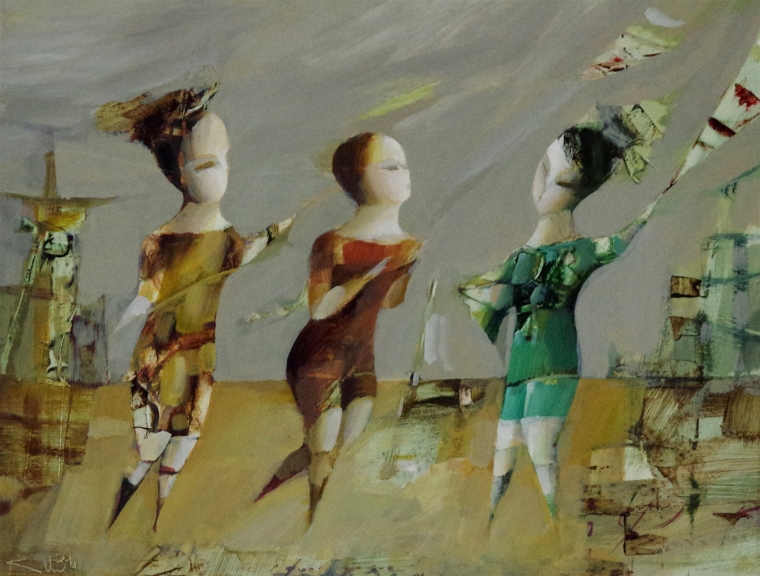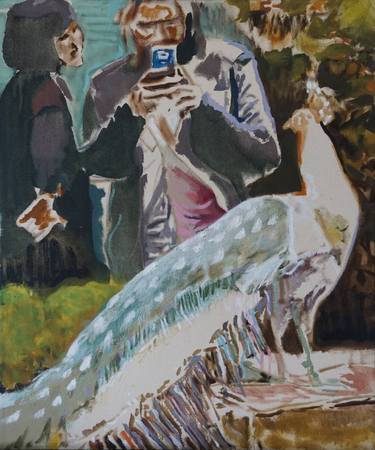The Influence of Figurative Oil Painting on Modern Art and Culture
The Influence of Figurative Oil Painting on Modern Art and Culture
Blog Article
The Function of Emotion and Expression in Metaphorical Oil Paint: A Comprehensive Analysis of Subject and Composition
The interaction of feeling and expression in figurative oil paint acts as a critical lens where one can analyze the complex connection between subject and make-up. Artists harness different techniques, from shade option to brushstroke dynamics, to cultivate emotional vibration within their jobs. This nuanced orchestration not just forms customer assumption yet likewise welcomes a much deeper inquiry right into how these components coalesce to mirror the intricacies of human experience. As we explore this abundant terrain, one need to consider just how particular study illuminate the more comprehensive effects of these artistic options.
Recognizing Emotion in Art
Feeling in art offers as a powerful channel for expression, permitting artists to communicate complicated sensations through their work. In metaphorical oil paint, this emotional depth is usually portrayed with the representation of the human number, catching the subtleties of human experience. The choice of topic, shade palette, and brushwork all contribute to the psychological vibration of a piece.
Artists frequently bring into play individual experiences, social issues, or universal styles to stimulate sensations in the audience. A picture may mirror vulnerability, while a dynamic number in activity can signify liberty or chaos. These psychological strings connect the viewer to the artwork, promoting a dialogue that transcends the visual medium.
Furthermore, the interplay between light and shadow can amplify emotional strength, leading the viewer's stare and accentuating certain components within the make-up. The usage of structure in oil painting even more adds layers of complexity, welcoming a responsive reaction that improves the emotional experience. Overall, understanding feeling in art is crucial for valuing the nuances that define figurative oil paint, as it transforms mere depiction right into a profound exploration of the human problem.
Trick Aspects of Structure
In the realm of metaphorical oil painting, the composition works as the underlying structure that organizes aesthetic components and improves the emotional story. Crucial parts of structure include equilibrium, comparison, focal point, and rhythm, each adding to the overall influence of the art work.
Equilibrium describes the distribution of aesthetic weight within the painting, which can be attained with asymmetrical or balanced arrangements. A healthy structure provides stability, allowing the customer to engage with the item harmoniously - figurative oil painting. Contrast, on the various other hand, includes comparing different components, such as light and dark or cozy and awesome shades, to direct the visitor's eye and evoke psychological reactions
The centerpiece is important, as it directs interest to one of the most significant component of the paint, typically highlighting the psychological core of the narrative. With strategies like color saturation or positioning, artists can emphasize this area successfully. Lastly, rhythm refer to the rep of elements, producing a feeling of movement and flow throughout the structure. By masterfully incorporating these crucial elements, musicians can craft engaging and psychologically resonant metaphorical oil paints that astound and involve their audience.
Topic and Its Impact
Topic plays a pivotal role in figurative oil painting, as it not only works as the structure for the story yet additionally forms the visitor's analysis and psychological interaction with the artwork. The option of subject-- be it a solitary number, a group dynamic, or a thematic depiction-- straight affects the emotional environment conveyed to the audience.

For instance, pictures typically evoke individual connections, disclosing the ins and outs of human expression and character, while scenes showing common activities can produce a sense of belonging or fond memories. The you can try these out cultural and historic context of the subject issue enhances the visitor's understanding, triggering much deeper reflections on societal standards, worths, and the human condition.
Various subjects also produce differing levels of interaction; a significant conflict portrayed via numbers in tension might evoke feelings of stress and anxiety or empathy, while tranquil landscapes can conjure up serenity and consideration. Inevitably, the impact of subject in metaphorical oil paint is extensive, as it offers as a conduit for emotional resonance, assisting the visitor's response and interpretation, and cultivating a link in between the onlooker and the artwork. This visit our website interplay is crucial for the successful communication of the artist's intent.
Methods for Evoking Feelings
The efficiency of metaphorical oil paint in communicating feelings is dramatically affected by the strategies used by the musician. Among the most important methods is making use of color concept, where the strategic selection of hues can evoke particular emotional responses. Warm shades, such as reds and oranges, frequently elicit feelings of interest or aggressiveness, while cooler tones like blues and environment-friendlies often tend to stimulate peace or unhappiness.
An additional crucial strategy is the adjustment of light and shadow, understood as chiaroscuro. This method enhances the three-dimensionality of numbers, developing remarkable contrasts that can heighten emotional depth. The positioning of light can assist audiences' emotions, highlighting specific components of the structure.
Brushwork likewise plays an essential role; loose, meaningful strokes can communicate energy and spontaneity, whereas smoother strategies may recommend serenity or accuracy. The arrangement of topics within the composition can affect emotional impact. Close closeness can suggest affection, while distance might suggest seclusion.
Eventually, the combination of these methods enables musicians to craft narratives that reverberate with the audience, changing a simple aesthetic experience into an expressive emotional trip. - figurative oil painting

Case Researches of Noteworthy Functions
Examining significant jobs of figurative oil painting exposes just how various methods are utilized to stimulate effective emotions. One exemplary situation is Edvard Munch's "The Scream," where the altered number and swirling background convey existential dread. Munch's usage of shade-- vivid oranges and deep blues-- escalates the emotional impact, showcasing how combination options can form visitor experience.
One more considerable work is find out here Pablo Picasso's "Les Demoiselles d'Avignon." Right here, fragmented types and strong brushstrokes reflect a tumultuous emotional landscape, challenging conventional representations of the female number. Picasso's cutting-edge make-up not just catches the audience's attention but also welcomes reflection on styles of identity and sexuality.
Additionally, Frida Kahlo's "The Two Fridas" supplies an emotional expedition of duality and self-identity. The contrasting numbers, connected by a shared heart, exemplify Kahlo's psychological deepness and personal narrative. figurative oil painting. Her thorough interest to detail and symbolic elements offer to engage viewers on a visceral degree
These study emphasize the profound link between emotion and make-up in metaphorical oil painting, disclosing exactly how artists harness technique to connect complicated feelings and stories that reverberate throughout time and society.

Conclusion
Finally, the interplay of feeling and expression in metaphorical oil painting dramatically improves the visitor's experience and interpretation of the artwork. Via a careful choice of subject issue and compositional techniques, artists communicate profound narratives that reverberate on both individual and universal degrees. The application of color concept, chiaroscuro, and brushwork further magnifies psychological depth, transforming each canvas right into an effective reflection of the complexities of the human experience.
In figurative oil paint, this psychological deepness is typically represented through the depiction of the human figure, recording the subtleties of human experience.Moreover, the interplay between light and shadow can intensify emotional intensity, directing the customer's stare and attracting focus to specific aspects within the structure. The use of structure in oil paint even more includes layers of intricacy, welcoming a tactile response that enhances the emotional experience.The focal point is important, as it guides interest to the most considerable component of the painting, commonly highlighting the psychological core of the story. Eventually, the effect of subject matter in figurative oil painting is profound, as it offers as an avenue for psychological vibration, assisting the customer's action and interpretation, and promoting a connection between the viewer and the art work.
Report this page